Monday 24 November 2014
Otherness and the Gaze
'sex' is the physical anatomy of the person
'gender' is socially defined by what society expects to see
'essential-ism' is the standards that are expected
'The gaze' is what / how we look at things in mainstream society
'Otherness' is what is outside of mainstream and the minority group
Nan Goldin
she questions gender and sexuality
she believes cross gender is a 3rd gender
The Gaze
this is a cutlurally loaded look
we look at everything with preconceptions
the person who is looking has all the power
Male Gaze
this is about men's attitude to women and how women get represented.
there are preconceptions that are in place, typically women get represented as a 'damsel in distress' style character whereas the man is dominant in his role and he has the power. Women become objectified in their roles and are usually there for the men's visual pleasure
Stereotypes
- The War Hero
This is the stereotypical genre of the guy rescuing the woman
- The Cowboy
A pioneer of the western front this shows a glamorous version of events as history was very different to what is being shown
- WW2
This brought upon the new feeling that women are not damsels and that they can do what the men do, this was brought on by the women going into the workplace while the men were away
- The HomeMaker
This stereotype was forced to the forefront of society as after the war the men wanted their jobs back but the women did not want to leave, this stereotype showed women all the positive aspects of becoming a stay at home mum again
Laura Mulvey
A theorist who examines the gender in society, she says that women are being used as 'decorative' objects and that this is shown through the likes of the 'Miss World' competitions where the women shows off their physical attributes and represent themselves as perfect women.
Ideology
Marxist Terms - Karl Marx
what you know isnt real - you are told to know it
false consiousness
Das Kapital (1848)
commodity fetishism
cigarette ad / perfume ad
what is it selling? = the lifestyle, not just the product
Ads create mythical worlds
celebration, in florida
Victor Burgin
anti campaign
hollowness of mass media
John Berger
ways of seeing
ads and documentary are becoming tangled = hard to now tell difference
Paul Wombell
Han Haacke
Adbuster
these all use established channels to deliver new messages / they take existing adverts and change to images and text to create new meanings and show messages that people are going to understand because they understand the original context
Everthing is a product of its time
cultural factors, inside jokes = only make sense because people understand the history and the background info hidden within the images
Mini Task :
What happened in the 70's ?
This is a list me and the group I was with came up with:
Disco
Punk
Womens Lib
Cold war was ongoing
Vietnam War
Fashion = flares / afros / perms
Rocky Horror Picture show
Willy Wonka
Chainsaw massacre - the first one
Star wars - highest grossing film of decade
Grease - was made
Margaret Thatcher - first woman prime minister
Twin towers- tallest buildings
Stephen Hawking - discovered black holes
Protesting - image of the girl who puts the flower in the gun
Jimi Hendrix died
Floppy disc invented
Walkman invented
People were taking drugs
Revolutions
This was the decade of the lower classes pushing back against the government, political unrest and anger.
Monday 17 November 2014
Image as Self
portrait : constructs/reinforces identity
Alec Soth
"Sleeping by the Mississippi" is a series which focuses on the people that visit the Mississippi banks.
painting : portrait / still life
objects have meaning : represent things about the people (for example that they are wealthy, literate)
animorphous : skull
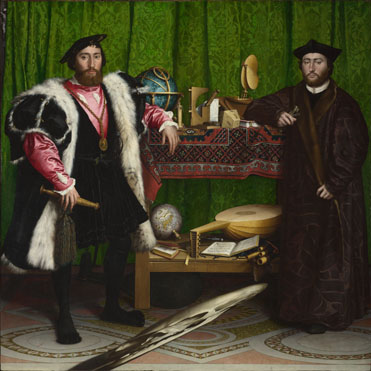
Jan van Eycke
The Arnolfini Portrait is full hidden meanings: such as the oranges that connote fertility, the dog and the dark leather shoes representing wealth.This painting shows exactly how symbolism can be used and in the different ways.

Tina Barney
candid / tabloid
shows identity and surrounding location within her photography, the background helps reveal more about the person

Edward Sheriff Curtis
studied people / society, especially the Native Americans.

August Sander
social structure in Germany
objective - no info given on the person, we as viewers must make our own conclusions

Diane Arbus
appearance of people
she was not very technical but focused her efforts on the visual aspects
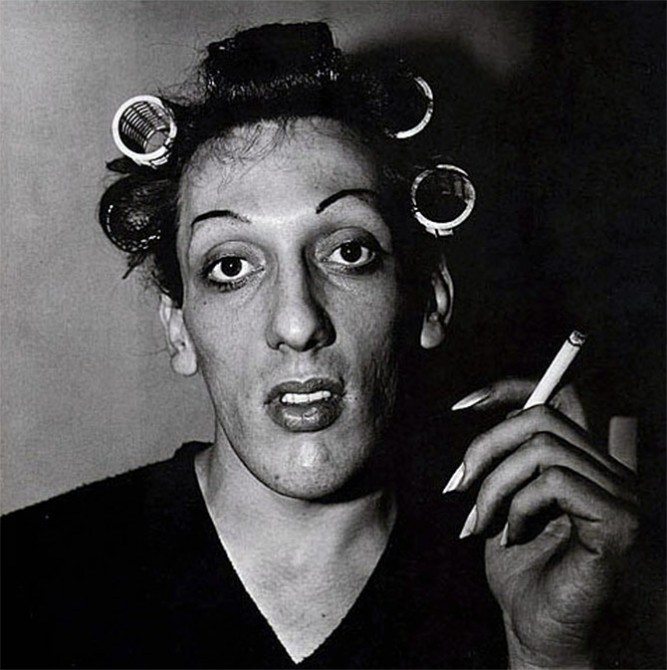
Nicholas Nixon
This photograph shows a close up of the photographers face, he has offered us a detailed look at his face through the use of his photography, it shows all the detail in his eye and he is not trying to omit details but rather highlight them.

Thomas Ruff
objective / scientific / "face as a mask"
shallow DOF, drawing the viewer in as these images were exhibited large scale

Andres Serrano
his reaction to the KKK
styled - atmospheric
invoke a reaction in viewers

Cindy Sherman
how women were represented : Gaze
she challenges the Male Gaze by placing herself into these positions and making a comment about the portrayal of women.
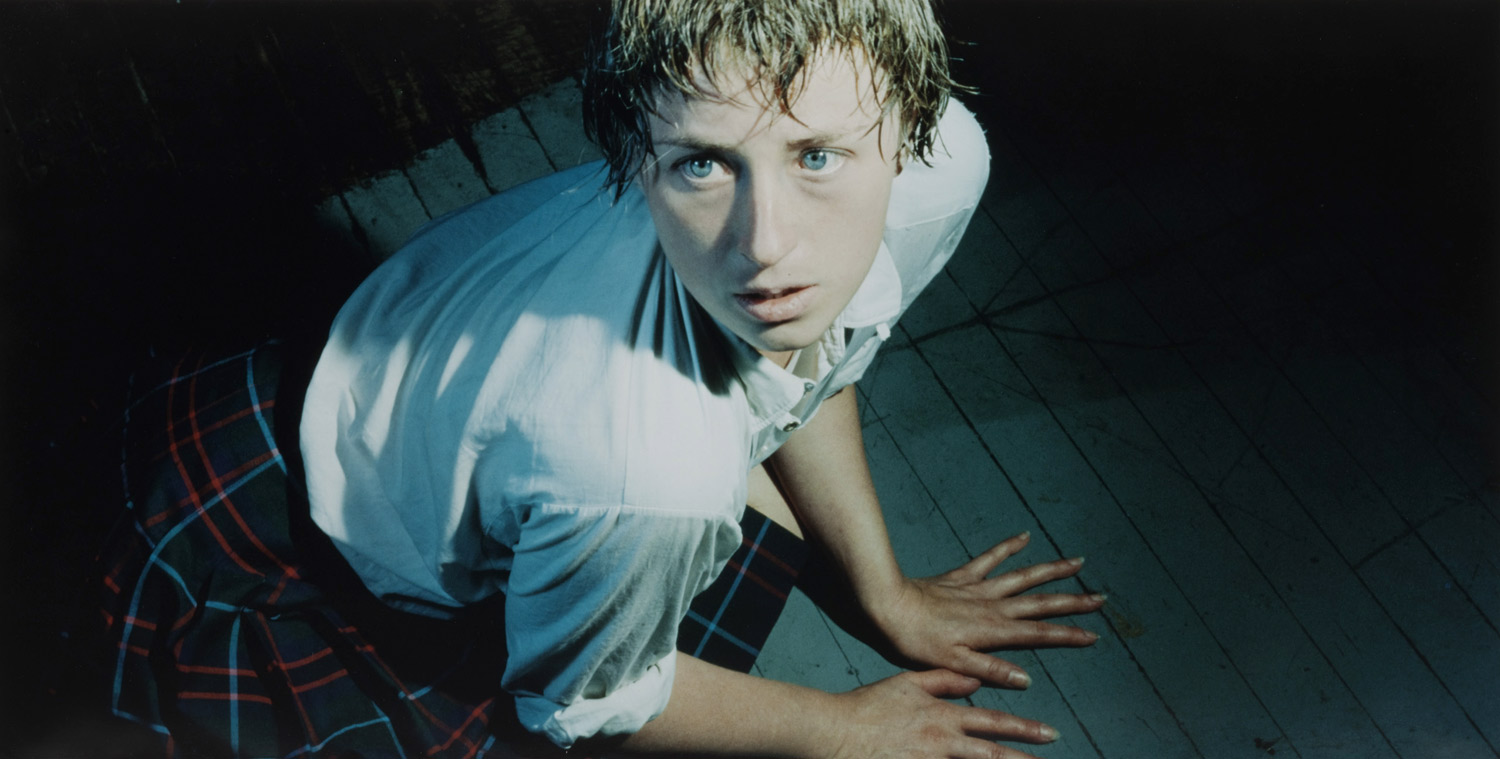
Steve Pyke
photographs groups of people but takes singular portraits, he has a series that focuses on Veterans

Djkestras
video portraits
15-22years old
the people are drunk or high
Also she did a series about teenagers going to the beach, showed them all in similar poses and locations, highlighting that people are all the same even though we do not realise it.

Monday 10 November 2014
Photographic Message
what does the image denote / conote ?
Roland Barthes - photographic message - VLE and printout in book
The Rhetoric of the Image
(the meaning behind it )
camera angles
backgrounds
iconography (ie flags)
emmission - the image is being made
transmission - the image is being seen
reception - where the image is seen
trick effects photoshop, creates a new meaning/image
poses/objects contrasts, angles
syntax layout, text+photos
photogenia shows what cant be written
However the two men both want to be seen as working together their alone-ness is highlighted by the way they have been shown on different sides of the frame. The words chosen can be analysed themselves; they are going to go to war in order to stop death and destruction which is a juxtaposition of its self.
The low camera angle elevates the two men and makes the audience look up to them, furthermore the facial expressions have been chosen specifically to connote different messages; one of agression and commanding power, another slightly more neutral expression which shows calm reserve.
Decoding the Image
Is documentary a fact ?
I think that documentary photography is not a fact, it is just one persons viewpoint.
*Photography: a Critical Nature*
by Liz Wells
truthful record?
does the camera lie?
people believe that photographs are authentic because they do not understand the trick effects that are possible with the camera, they see it as a machine that can not be tampered with
Stephanie Sinclair
Too Young to Wed
images by themselves dont give a background story or context:
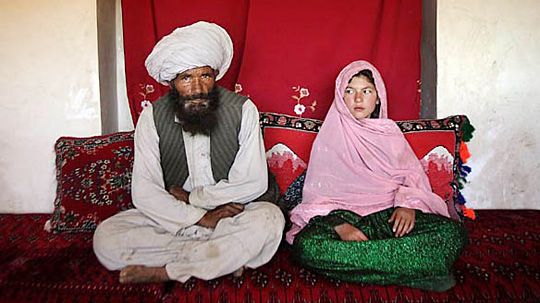
Without the context of this story the photograph denotes a young girl and a man sitting next to each other, if more information were offered the viewer would know that this young girl is being forced into marriage and it is her wedding day. The photograph is not lying but it is omitting certain details that would be helpful to understanding the photograph.
Roland Barthes
photographic message
press photography and its meaning
denoted + connoted message
connoted is heavily coded
how is it connoted ?
many things can give off connotations: layout, camera angle, facial expressions, stance, colours used...
Kevin Lamarque Reuters
Guardian image
- layout of flags - sarcasm/irony "working together" and the flags are mixed together
-facial expressions - aggressive/passive
'points of view' - have to understand different points of view not just your own
colours - represent all the flags
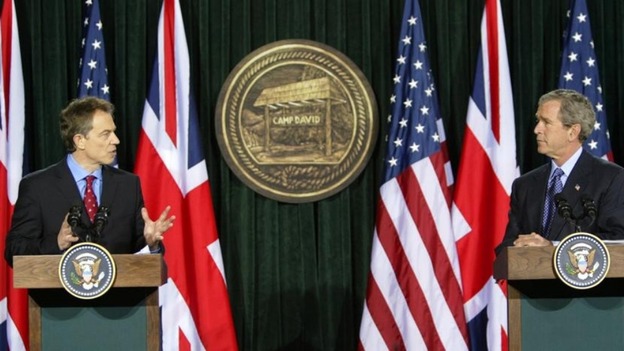
What creates meaning?
emission - what is put out
transmission- how it is put out
reception - how it is taken in
All these things affect how the viewer is going to react to what is being shown
Paul Graham
north ireland
small incidents of war + their impact
new way of communicating warfare
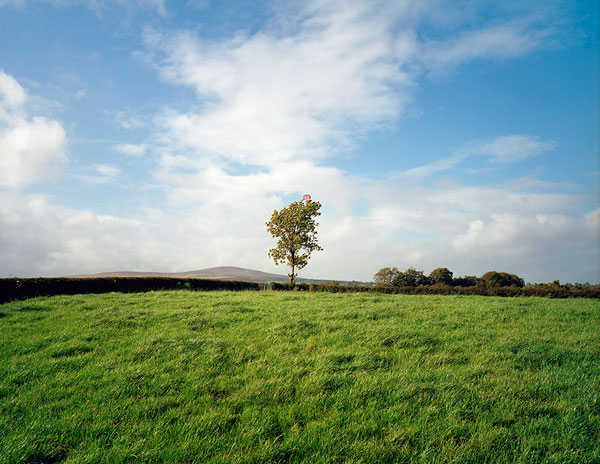
An-My Le
vietmanese - effects / causes of the image
kite festival - understand the conflict to understand the image, the kites are the symbols of the war

Simon Norfolk
execution grounds
beautiful image - with a dark undertone
Susan Meiselas
old images into the landscape
reengage community
^^^^^war photographers - looking for the bigger picture
Monday 3 November 2014
Tourism, Landscape and Myth
Myths
creation of stereotypes by :
postcards / tourist brochures / landmarks
They show the glamorized version of the destination to attract tourists
Martin Parr
debunks myths
shows tourists responses to places
Small World (project) - tourists resorts
wider vision - society / culture / stereotypes
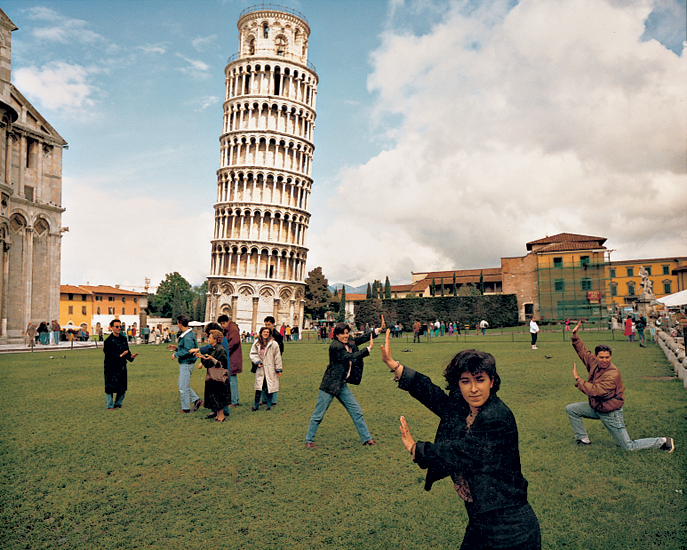 |
| From the series Small World |
In this image Martin Parr is showing how the tourists all react in the same way, he is making a humorous comment about them.
Stereotypes
places: picturesque = inspiring to make you go there
aesthetic / nostalgia
advertising = tiny fragment of a whole
unchallenging
activities / sites of culture
Photographers used to send work back home
natural but different / exotic
painters were hired to show clients in exotic locations
people / natives add a charm element
ideological
"the grand tour"
particular view = an ideal view = not true
not showing realities of life = romantic images
happy peasants however farm life was difficult
Josie Bland
showing yourself in the location - there is a need to prove you have been
Egypt - real / run down / everyday life
Tourists Gaze
inf by magazines
Tourists visit places with preconceptions in their mind, they expect certain things, such as the world to be glamorous and exotic, they do not realise it is some peoples home and it is not exotic to them.
Thomas Gainsborough
painted aristocrats to show off the clients wealth and land

P H Emerson
pictures of east anglian life
documents similar to painters style

Frank Meadow Sutcliffe
Whitby - he photographs the local area because he did not have transport
He finds beauty in the everyday, local area he lives and works in

John Constable
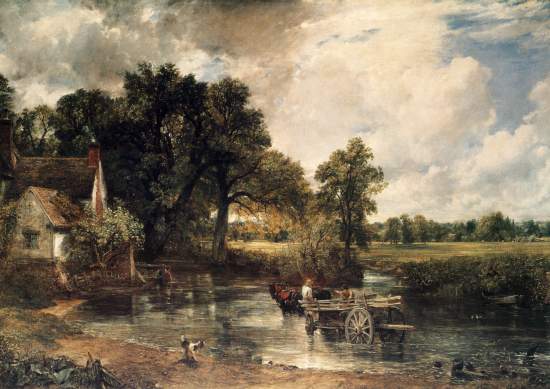
Peter Kennard
reinterprets John Constable
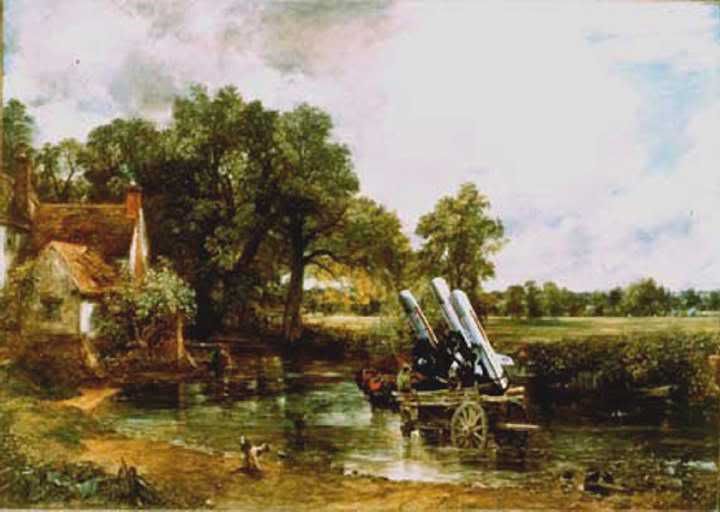
Grief Tourism
ground zero / auschwitz - why do people go?
Anselm Kiefer - interprets land - makes a point
Christian Boltanski - holocaust - photogravure
Victor Burgin - playing on war myths / aware of society
Ron O'Donnell
- makes sculptures on statements
waterfall
consumerism
Karen Know
museums - who is it designed for?
why do we go?
Martin Parr
iconography / myths of british culture
shows the reality

Myths are created by the tourism industry in order to draw attention to that particular desination and attract tourists, this will bring profits into the destination.
Nature of Photographs
*Nature of Photographs by Stephen Shaw*
Colour changes the atmosphere in the photograph because the eyes are lead differently around the image because the colour catches our eye not the subject, colours can be used to manipulate because different colours have different meanings and people associate them with pre ingrained connotations. The tonality of the colours (or saturation level) can also affect the mood that the photograph emits as a dull (desaturated) image gives off a more negative connotation than a brightly over-saturated one will.
Black and White photographs do not mean that the image is more real, however the connotation of B+W are that the photograph is more artistic and that it is 'real' because of the first images that were able to be made were B+W because of technical limitations.
Context will also affect the way that photographs are read, images seen in newspapers are often dismissed yet if the same photograph appeared on a wall in a gallery there would be a different reception received. Depending on the subject the location of the photograph can be equally important as the photograph.
When people view an image they do not think of what has been omitted; these omissions are just as important, as if they had been included would the entire meaning of the photograph change? Would the atmosphere be different? Have these elements been omitted just so that the photographer can reinforce their own point instead of showing the whole picture/story?
There are two different types of framing: passive and active. A photograph with a passive framing means that the main focus is in the centre of the image and there is negative space or just small background elements against the edge of the framing. An active frame is a photograph that leads the viewers eye outside of the photograph, this could by placing the model on the edge of the photograph.
Robert Adams
His works show how that man is affecting the shape and lay of the land.

Thomas Joshua Cooper
emerging / submerging / emerging
The work that he does are beautiful commentaries on the nature that surrounds us

William Eggleston

Stephen Shore

John Davies
he influenced :
The Bechers
"conceptual artists"
taught at Düsseldorf school
these people were taught at the school :
Andreas Gursky
Axel Hutte
Thomas Struth
Colour changes the atmosphere in the photograph because the eyes are lead differently around the image because the colour catches our eye not the subject, colours can be used to manipulate because different colours have different meanings and people associate them with pre ingrained connotations. The tonality of the colours (or saturation level) can also affect the mood that the photograph emits as a dull (desaturated) image gives off a more negative connotation than a brightly over-saturated one will.
Black and White photographs do not mean that the image is more real, however the connotation of B+W are that the photograph is more artistic and that it is 'real' because of the first images that were able to be made were B+W because of technical limitations.
Context will also affect the way that photographs are read, images seen in newspapers are often dismissed yet if the same photograph appeared on a wall in a gallery there would be a different reception received. Depending on the subject the location of the photograph can be equally important as the photograph.
When people view an image they do not think of what has been omitted; these omissions are just as important, as if they had been included would the entire meaning of the photograph change? Would the atmosphere be different? Have these elements been omitted just so that the photographer can reinforce their own point instead of showing the whole picture/story?
There are two different types of framing: passive and active. A photograph with a passive framing means that the main focus is in the centre of the image and there is negative space or just small background elements against the edge of the framing. An active frame is a photograph that leads the viewers eye outside of the photograph, this could by placing the model on the edge of the photograph.
| Tom Sparks (an example of passive framing) |
 |
| Darren Rowse (an example of active framing) |
Robert Adams
His works show how that man is affecting the shape and lay of the land.

Thomas Joshua Cooper
emerging / submerging / emerging
The work that he does are beautiful commentaries on the nature that surrounds us
William Eggleston

Stephen Shore

John Davies
he influenced :
The Bechers
"conceptual artists"
taught at Düsseldorf school
these people were taught at the school :
Andreas Gursky
Axel Hutte
Thomas Struth
Subscribe to:
Posts (Atom)
